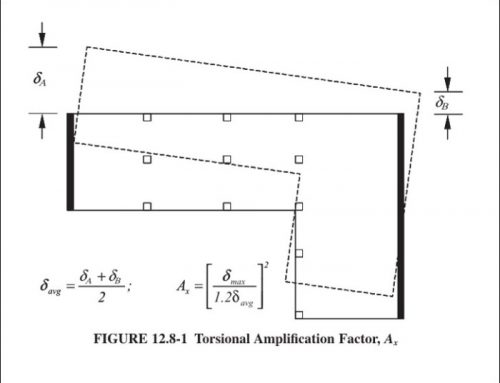Question:
Why in different building codes (UBC 97 or ASCE 7) the results of Response Spectrum Analysis (RSA) should be scaled such that the design base shear should match with the (e.g. 80%, 90% or 100% of the) design base shear obtained from the Equivalent Static Analysis?
Answer:
The requirement of a base shear scaling for the Response Spectrum Analysis (RSA) procedure is included in the building codes as a means to ensure that the minimum strength of a structure designed using the RSA procedure is similar to the strength that would be required if the structure was designed using the Equivalent Static Method (ESM) [or the Equivalent Lateral Force (ELF) Method]. This requirement can be seen from a historic perspective. In earlier version of several building codes, the RSA procedure was included as an optional procedure which the designer could use in order to capture a more accurate distribution of effective earthquake forces (compared to the default design option i.e. the ESM) along the height of structure. This would result in a better distribution of capacity throughout the structure compared to what is required by ESM with empirical foundation. While ensuring that the design base shear should be at least comparable with the ESM base shear, the allowance of using a reduced design base shear (i.e. 80% or 90% of the ESM base shear) can be seen as a reward for using a more accurate design method (i.e. the RSA procedure). Currently, some building codes allow for the design base shear to be as low as 80% of the ESM base shear for some regular structures. However, for irregular structures (or the structures with high seismic risk), the codes ensure that the design base shear should be at least 100% of the ESM base shear. So, the later standards, although acknowledge that the RSA method provides a more realistic distribution of effective earthquake forces, still relate the minimum allowable capacity of the structure to that determined using the ESM.




Leave A Comment